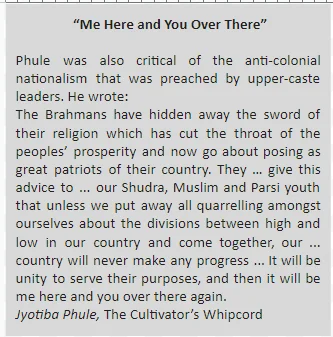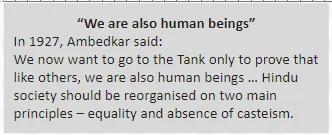![]() 25 Jun 2024
25 Jun 2024
Reform movements emerged, challenging traditional caste hierarchies and advocating for social equality and justice. Figures like Raja Ram Mohan Roy and Jyotirao Phule played crucial roles, laying the foundation for future social reforms and the fight against caste discrimination.
Caste inequalities: Some social reformers also criticised caste inequalities.
Missionary Schools: During the 19th century, Christian missionaries began setting up schools for tribal groups and “lower” caste children.
Demands for Equality and Justice
Movements for Social Equality: By the second half of the 19th century, people from within the Non-Brahman castes began organising movements against caste discrimination, and demanded social equality and justice.
Birth: A “Non-Brahmin caste” leader Jyotirao Phule, born in 1827, studied in schools set up by Christian missionaries.

Temples Entry and Ambedkar
Birth: Ambedkar was born into a Mahar family.


Origins of the Non-Brahman Movement: The non-Brahman movement was initiated in the early 20th century by those who had acquired access to education, wealth and influence.
Periyar’s Early Life and Awakening: E.V. Ramaswamy Naicker, or Periyar, had been an ascetic in his early life and had studied Sanskrit scriptures.
| Must Read | |
| Current Affairs | Editorial Analysis |
| Upsc Notes | Upsc Blogs |
| NCERT Notes | Free Main Answer Writing |
Despite resistance, the 19th century saw the rise of caste reform movements. Jyotirao Phule challenged Brahminical dominance, while B.R. Ambedkar fought for temple entry. The 20th century saw the Non-Brahman movement led by Periyar, advocating for social equality and Dravidian identity.
<div class="new-fform">
</div>